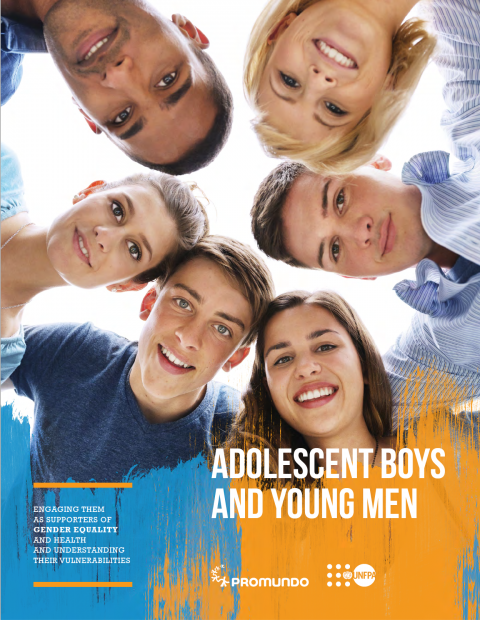
Achieving gender equality must, and has, involved efforts to understand the vulnerabilities and risks that adolescent girls and young women face every day – but how much do we know about the realities of adolescent boys and young men? This report takes a deeper look at the daily lives of adolescent boys and young men around the world and at how they can join the movement towards improved health and gender equality.
Exploring global research, the report reveals boys’ and young men’s specific risks and realities in relation to health in general, sexual and reproductive health in particular, sexuality, media violence, sexual exploitation and other vulnerabilities. It analyzes the implications of these risks and realities not only for boys, but also on the lives of women and girls.
Adolescence is a key period where individuals of all gender identities form attitudes, opinions and beliefs – about themselves, about their sexuality and about their place in the world. It is a period when ideas about equality can become ingrained. The study emphasizes that a holistic approach to advancing gender equality and sexual and reproductive health must include both adolescent girls and boys. It highlights the need to engage adolescent boys and young men as allies to achieve gender equality and as supporters of women’s empowerment, as well as the importance of addressing the specific health and social development needs of boys themselves.
Click here to download the report in full.
In greater detail
While there has been an increased focus on engaging adolescent boys and young men in Sexual and Reproductive Health and Rights (SRHR) and gender equality, and an increased recognition in the mutual benefit this brings, it is often still not a priority. This paper argues that the need for this engagement and the importance of addressing the specific health and social development needs of adolescent boys and young men are intertwined. It establishes a conceptual framework for this engagement and reviews current research on specific issues affecting boys’ and young men’s lives.
Data presented primarily focus on adolescent boys aged 15 – 19, but also include younger boys aged 10 – 14 and young men aged 20-29. The terms “boys”, “young men” and “men” are used interchangeably throughout the document.
Although limited, the evidence base demonstrates that boys are vulnerable to rigid norms related to notions of “real men” including: violence, risky sex and dropping out of school. Further, heteronormative and homophobic norms often create specific vulnerabilities for LGBT youth. There is evidence that younger generations of men in many parts of the world are more accepting of gender equality than older generations. Other findings include:
- Research suggests that when boys feel they are in a safe and confidential space, they will talk honestly about their experiences. Engaging adolescent boys and young men means understanding their lived experiences. This includes the stress of inability to find work, difficulty in seeking help for mental health or substance abuse, and the struggle to conform to unattainable ideas of what it means to be a man.
- Evaluation research suggests that are willing and motivated to change their attitudes to gender equality, and that adult men’s behaviour witness during childhood influences their behaviour.
- The relationship between vulnerabilities associated with being an adolescent boy or young man and gender norms is complex. An ecological-model perspective helps to understand the interface between relationships, communities, and structural institutions that perpetuate and break down inequality, and the importance of personal support from family and peers.
- Gender-synchronised approaches involve engaging people in challenging harmful constructions of masculinity and femininity that drive gender-related inequalities and hinder health and wellbeing. They embrace a common ground, rather than an ‘either/or’, approach. Successful examples include Programme H and M in Brazil, Stepping Stones in South Africa, and Gender Equity Movement in Schools (GEMS) in India.
The paper recommends:
- Programmes that question gender norms, challenge inequalities, and find benefits and opportunities for both adolescent girls and boys and young women and men. This may involve working with boys and girls, men and women, sometimes together, sometimes apart.
- Addressing the perception that SRHR is a women’s only issue by including boys and young men. However, it is also necessary to work with men and boys within and beyond this field, as actors with economic, political, and civil stakes and influence in gender equality.
Citation: Kato-Wallace, J., Barker, G., Sharafi, L., Mora, L., Lauro, G. (2016). Adolescent boys and young men: Engaging them as supporters of gender equality and health and understanding their vulnerabilities. Washington, D.C.: Promundo-US. New York City: UNFPA.